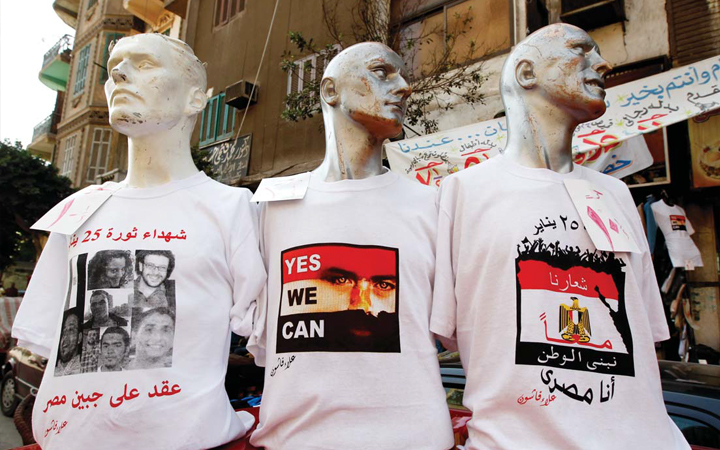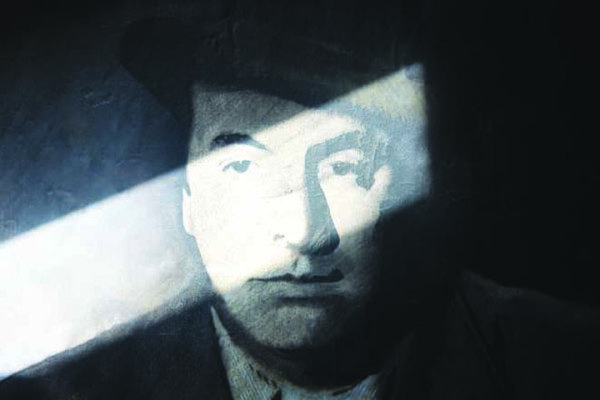You’ve seen these powerful images of the hoi polloi assembling on squares, united by the banners and slogans. It’s a pity that such moments of light, outrage and eyes full of hope occur so rarely in history. But in times where everything is sold, ranging from pleasure in 20 exotic positions to meteorite rocks, these moments can be bought as well: Teaching, marketing and blueprinting the revolt.
The US-based Albert Einstein Institute with Gene Sharp, the modern Guru of non-violent protest at the helm, have shared their well practiced methods online for free. In the leaflet 198 methods of nonviolent action (available in 32 languages) are listed. You can get inspirations from “Skywriting and earthwriting” all the way to “Overloading of administrative systems”. CANVAS (Centre for Applied Non-Violent Action and Strategies) from Belgrade, Serbia even trains revolutionaries world wide: From Belarus, to Egypt, Venezuela and many more, this organization sends model pupils to share the “blueprint of a revolution” with local activists. These common patterns of all uprisings have been the subject of sharing, marketing and selling the revolt since the 1990’s and with a recent upsurge in demand from the Middle East, CANVAS offers courses in “non violent social change” at Belgrade University, Colorado College, NYU and Harvard.
During the 5 days course at NYU you can learn anything from “Cost Benefit Analysis of Tactics” to “Propaganda and targeted Communication”. The Colorado University course “Waging Non-Violent Conflict” needs only 2 unexcused absences and you will fail the course. So the very idea of civil disobedience is upturned into formal learning at a university, one of the oldest, traditional institutions of modern society. The product of this dichotomy can only be the status quoist revolutionary, part of an “all doors are open to us”-elite, equipped with the means to alter the last resort of a people’s will: The streets.
The Gandhian view – the means have to be equally justified as the goal – finds its reverse here. The teaching avant-garde of non-violent conflict resolution has been under attack for various charges: working for the CIA, supporting US imperialism by training groups on Tahrir Square and other accusations. The defense to this alleged sale to nation states interests has always been: We don’t intervene, we just provide the basic tools, the means, leaving the end to the local conditions. What if the means are as beautiful as thousands of protesters in solidarity with candles and chants on Shabag square, but the end could remain as debatable as the execution of war criminals. That even popular support by the masses can turn out very ugly has been fantasized by Gustave LeBon’s Psychology of Crowds and lethally staged with Hitler’s Third Reich. The popular support, even if as peaceful as possible, cannot replace the moral assessment of any cause.
The revolt is sold to elites, (Although many websites like howtooccupy.org or www.seedsforchange.org.uk do provide free guidelines online), ugly nation-states are trying to get hold of it as well and louche goals can always spoil the beauty of uprisings. The youthful idea of peaceful revolt has become an old, cranky man.
A toolbox of peaceful emergency measures turns a meager participant of the democratic game into a citizen. Only teaching, equipping the masses with these powerful means could safeguard against evil political players and causes and yet leave enough space for the outstanding ones, who would drown in the university’s pool of mediocrity. It really can’t be too hard: Rise-up-classes, methods for social change, even training sessions in earth-writing on the lawn outside the school. Surely, opening up the doors of revolutions for everyone is not the prettiest treatment.
“Beauty, no doubt, does not make revolutions. But a day will come when revolutions will have need of beauty” – Albert Camus














